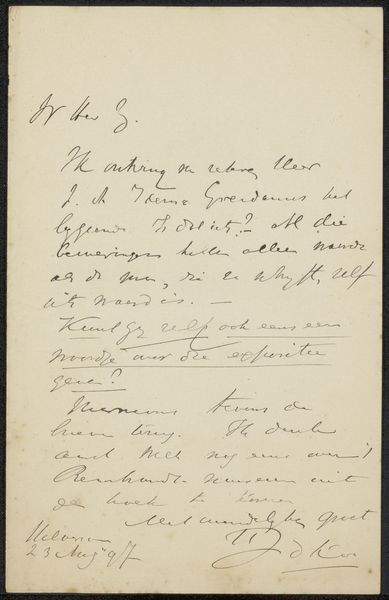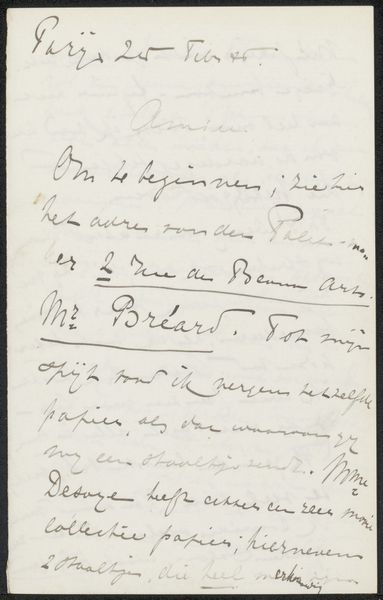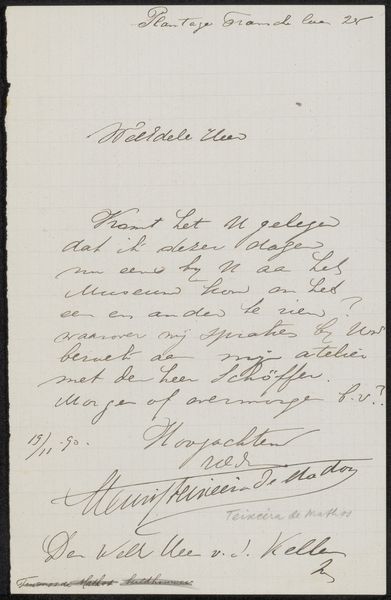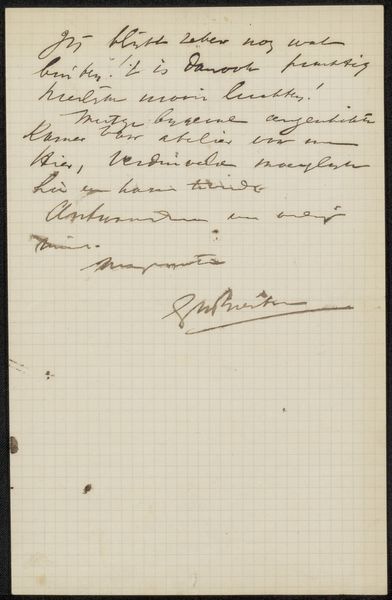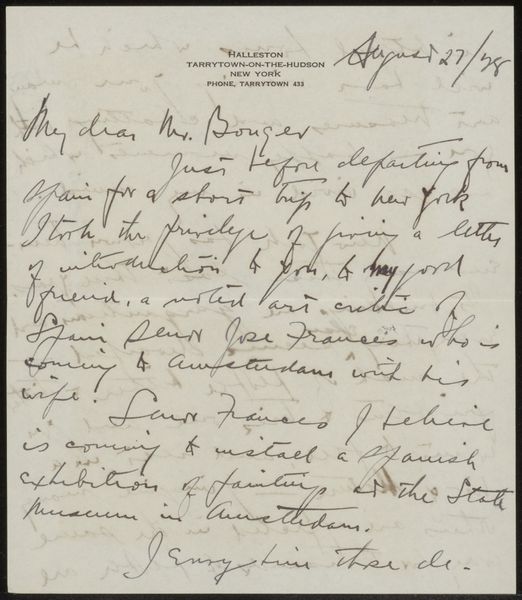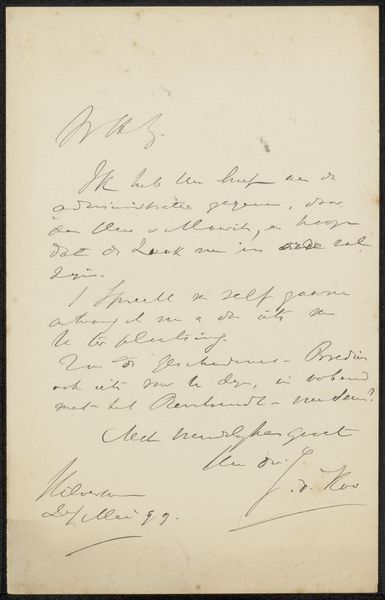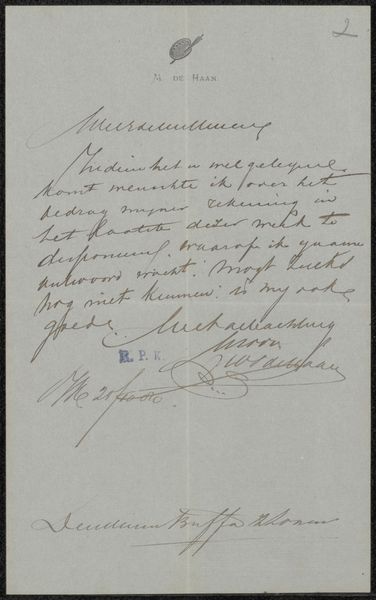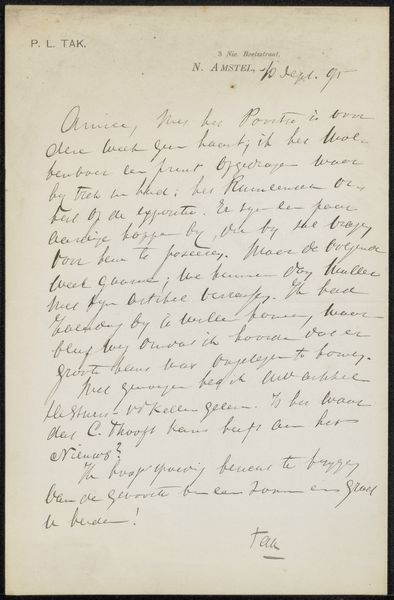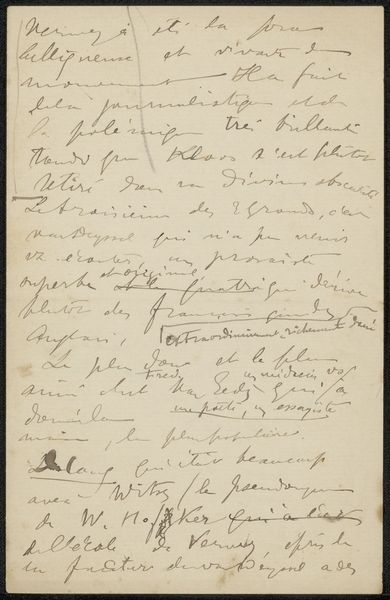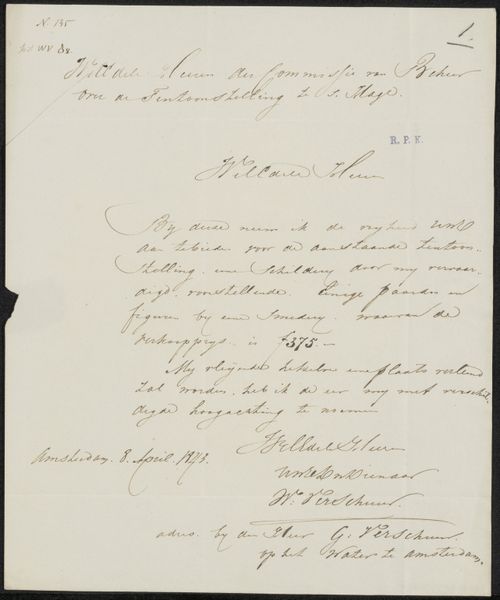
drawing, paper, ink, pen
#
drawing
#
ink drawing
#
pen sketch
#
paper
#
ink
#
pen work
#
sketchbook drawing
#
pen
#
calligraphy
Copyright: Rijks Museum: Open Domain
This letter was written in 1892 by Willem Steelink, but the recipient is unknown. It offers a fascinating glimpse into the social networks that sustained artistic practice in the Netherlands at the time. Steelink writes in Dutch, offering thanks for a letter he received, and discusses the price of Japanese, Chinese and Dutch papers. This detail illuminates the material conditions that shaped artistic production. Paper was not simply a neutral surface; its cost and availability influenced artistic choices. The mention of different kinds of paper also suggests an awareness of global trade and the circulation of materials that informed artistic practice at this time. To understand this letter fully, we might delve into archival records: correspondence, invoices, and exhibition catalogs can reveal the social world that gave meaning to the artist’s work. Art history thrives when we look beyond the single artist and artwork, and instead examine the institutional structures in which art is produced and received.
Comments
No comments
Be the first to comment and join the conversation on the ultimate creative platform.
